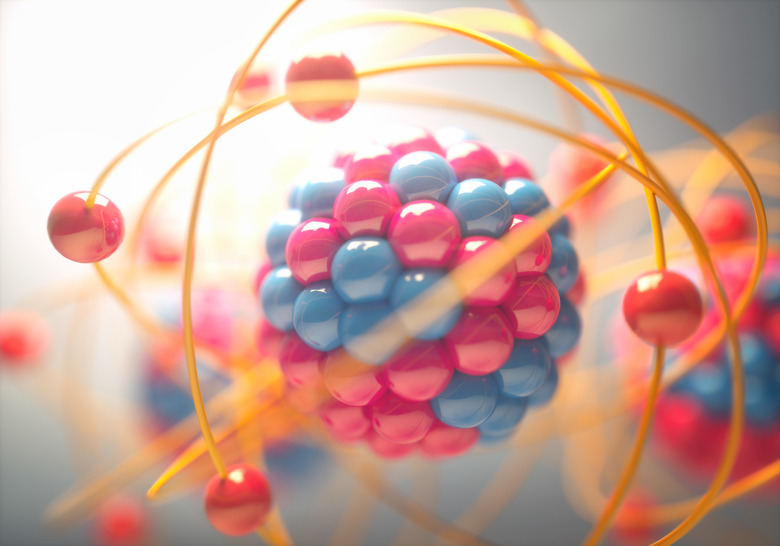What Does Ion Mean?
Normally, an atom has the same number of protons and electrons; their positive and negative charges balance out exactly so the atom is electrically neutral. However, if it loses or gains electrons, chemists call it an ion. Ions are more chemically active than neutral atoms because the charge imbalance attracts some atoms and repels others like little magnets. Ions make up many important chemical substances, including salts, acids and bases.
TL;DR (Too Long; Didn't Read)
An ion is an atom or molecule that has gained or lost electrons.
Shuffling Electrons and Ionization Energy
Shuffling Electrons and Ionization Energy
The atom is made of a nucleus of positively charged protons and neutral neutrons, surrounded by a cloud of negatively charged electrons. When a neutral atom loses an electron, the number of charges in the protons and electrons are no longer equal; the positive charge of the protons wins out and the atom becomes an ion with a net charge of +1. The atom holds its innermost electrons tightly, and the grip on the outer ones is less strong. Ionization energy is how chemists measure the difficulty of removing an electron.
Becoming an Ion
Becoming an Ion
An atom can lose electrons from colliding with ions and other charged particles, or from exposure to strong electromagnetic radiation such as X-rays. Ionization takes place in the presence of strong electric fields; when you flip on a fluorescent lamp, a high voltage ionizes the gas inside the bulb. Lightning also ionizes atoms. Dissolving certain substances in water, such as salt, ionizes the atoms.
An atom can become a negative ion by trapping a nearby electron.
Metals: Positive Ions
Metals: Positive Ions
The atoms of most metals on the left side and middle of the periodic table easily lose one or more electrons, leaving them positively charged. Examples include sodium, which loses one electron to become the sodium ion, and copper, which under normal conditions can lose up to three electrons.
Halogens: Negative Ions
Halogens: Negative Ions
On the periodic table, the next-to-last column is a group of elements called the halogens. These are highly reactive substances, mostly gases, that easily gain an electron, leaving them negatively ionized. The halogens include fluorine, chlorine and bromine, all highly corrosive substances that require careful handling and storage.
Salts, Acids and Bases
Salts, Acids and Bases
Some salts form from the pairing of a positive metal ion, such as sodium, and a negatively charged non-metal ion, such as chlorine. The opposite charges of each ion attracts the other, forming a chemical bond. Acids and bases are substances that become ionized when dissolved in water. For example, hydrochloric acid (HCl) splits into positive hydrogen ions and negative chloride ions in water. Bases are similar; potassium hydroxide (KOH), for example, breaks up into positive potassium ions and negative hydroxide (OH) ions in water. Note that hydroxide isn't a single ionized atom, it's an ionized molecule.
Cite This Article
MLA
Papiewski, John. "What Does Ion Mean?" sciencing.com, https://www.sciencing.com/what-does-ion-mean-13710211/. 14 March 2018.
APA
Papiewski, John. (2018, March 14). What Does Ion Mean?. sciencing.com. Retrieved from https://www.sciencing.com/what-does-ion-mean-13710211/
Chicago
Papiewski, John. What Does Ion Mean? last modified August 30, 2022. https://www.sciencing.com/what-does-ion-mean-13710211/
